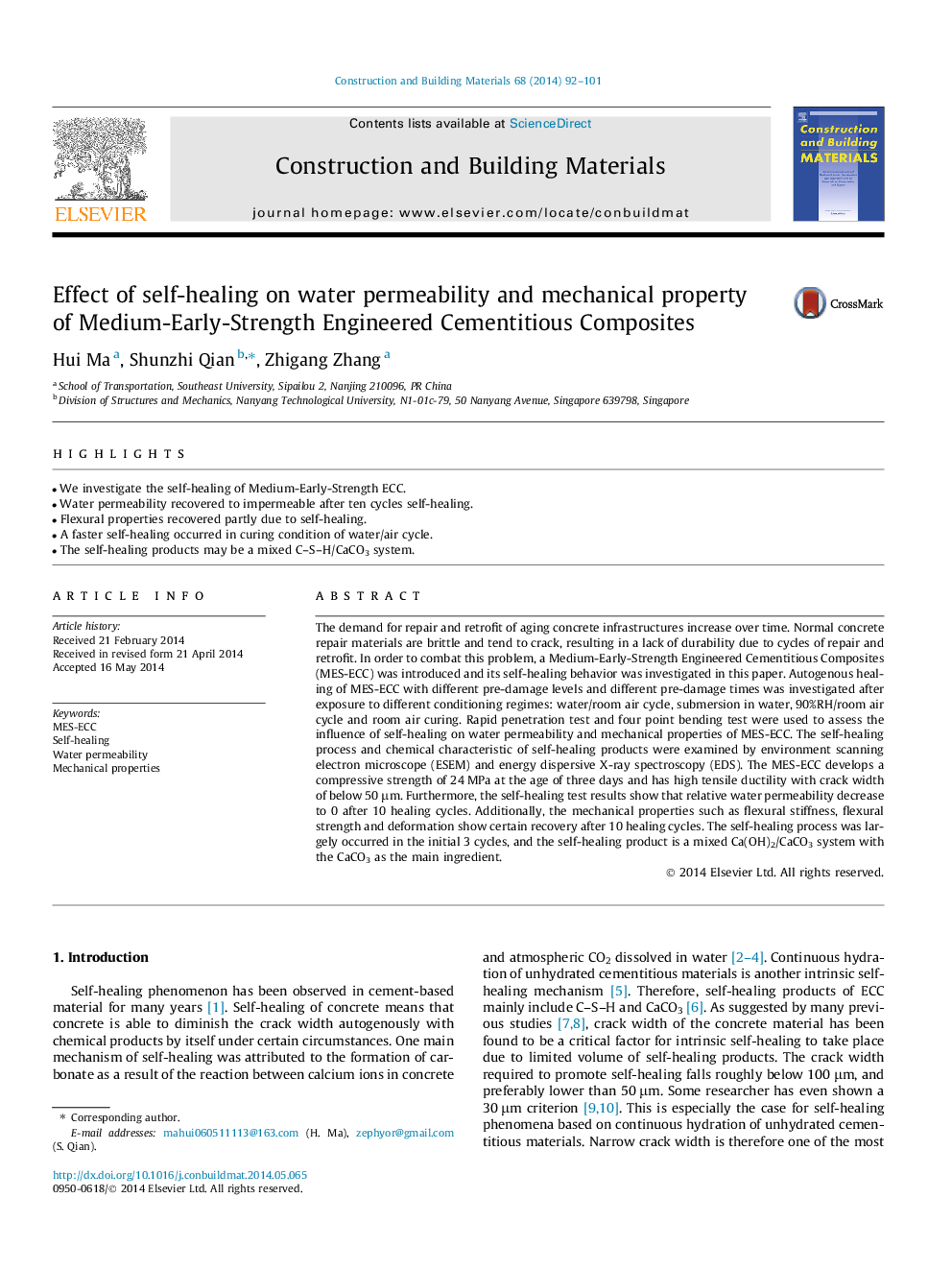| Article ID | Journal | Published Year | Pages | File Type |
|---|---|---|---|---|
| 6722301 | Construction and Building Materials | 2014 | 10 Pages |
Abstract
The demand for repair and retrofit of aging concrete infrastructures increase over time. Normal concrete repair materials are brittle and tend to crack, resulting in a lack of durability due to cycles of repair and retrofit. In order to combat this problem, a Medium-Early-Strength Engineered Cementitious Composites (MES-ECC) was introduced and its self-healing behavior was investigated in this paper. Autogenous healing of MES-ECC with different pre-damage levels and different pre-damage times was investigated after exposure to different conditioning regimes: water/room air cycle, submersion in water, 90%RH/room air cycle and room air curing. Rapid penetration test and four point bending test were used to assess the influence of self-healing on water permeability and mechanical properties of MES-ECC. The self-healing process and chemical characteristic of self-healing products were examined by environment scanning electron microscope (ESEM) and energy dispersive X-ray spectroscopy (EDS). The MES-ECC develops a compressive strength of 24 MPa at the age of three days and has high tensile ductility with crack width of below 50 μm. Furthermore, the self-healing test results show that relative water permeability decrease to 0 after 10 healing cycles. Additionally, the mechanical properties such as flexural stiffness, flexural strength and deformation show certain recovery after 10 healing cycles. The self-healing process was largely occurred in the initial 3 cycles, and the self-healing product is a mixed Ca(OH)2/CaCO3 system with the CaCO3 as the main ingredient.
Related Topics
Physical Sciences and Engineering
Engineering
Civil and Structural Engineering
Authors
Hui Ma, Shunzhi Qian, Zhigang Zhang,
